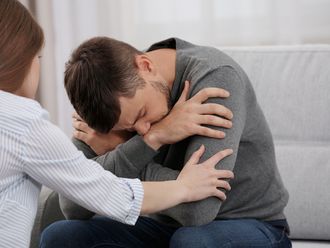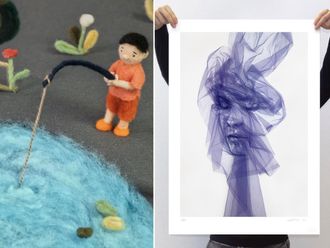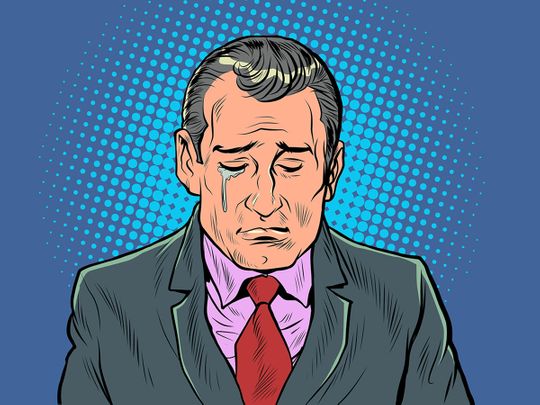
When the world blurs suddenly, your eyes fill up and a lump begins to rise in your throat, you have two choices. Either you melt into it, the cool-water-on-parched-dunes catharsis of tears flowing down your face, ready for the weight on your heart to lighten. Sometimes in front of others, but probably away by yourself, hidden.
Or, you fight it with everything you’ve got, looking up, taking deep breaths and gulps, distracting yourself in some way.
The truth is apparently a good cry can change the trajectories of lives for the better. Dr Rebecca Steingiesser, clinical psychologist and neuropsychologist at King’s College Hospital, Dubai, says, “The process of crying activates the parasympathetic nervous system (the body’s ‘rest and digest’ system) and restores the body to a state of balance. When we cry we are actually relieving our body of countless toxins and hormones that contribute to elevated stress levels.”
That doesn’t mean it’s time to put the latest tearjerker on the music charts on repeat, but instead, to be accepting of this emotional response that is so often stigmatised.
Crying is human
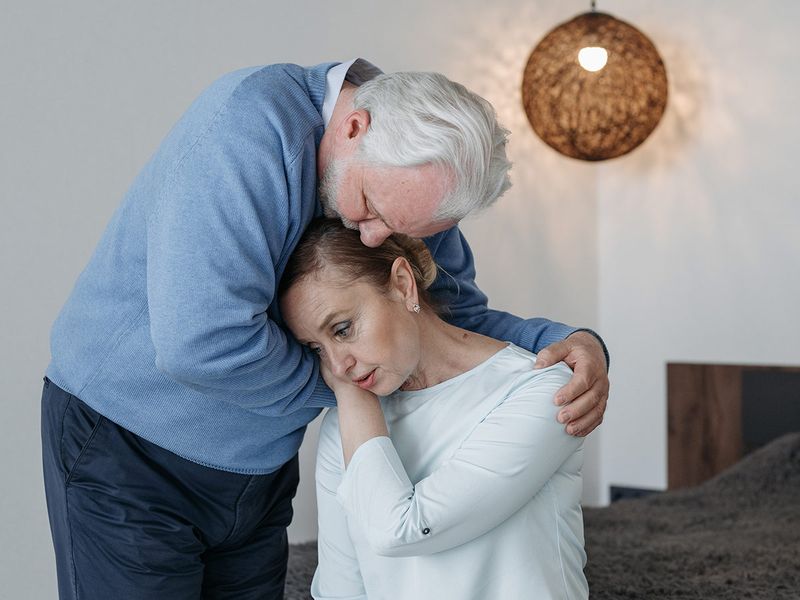
“Crying is universal, it’s part of our human experience. And therefore we should think about it as something that is very natural, in the same way that we might think about nipping to the toilet after a glass of water,” says Amelia Simpson, consultant psychologist at Dubai-based Reverse Psychology clinic.
Not all tears are shed the same, although they’re from the lacrimal gland or tear ducts situated right above your eyes. Simpson explains that there are three types –

To really understand ourselves, we must understand our tears. Sometimes, we feel like we’re crying for no reason but it is really that we don’t yet understand the reason. Our tears are definitely trying to tell us something – perhaps that we’re being denied something that we care about.
• Basal tears – These are constant tears that maintain moisture in the eyes.
• Reflex tears – These protect our eyes from harsh irritants like smoke, dust or the famously tear-inducing allicin from onions.
• Emotional tears – Only humans shed tears that spring from emotion. Simpson says, “It is the physiological reaction of producing tears in response to some emotional content. At one end, we’ve got that feeling of being choked up or having a lump in our throat – and at the other end of the continuum is the process of sobbing uncontrollably.”
If you don’t feel ashamed to be crying, and are in social situations where crying is accepted and not criticised, you can feel better after crying. In a 2009 study by Netherlands and Florida-based researchers published in the Journal of Social and Clinical Psychology concluded: “Crying episodes that featured the suppression of crying or the experiencing of shame from crying were less likely to be cathartic.”
First, banish the stigma: ‘Men don’t cry’ is the worst thing to tell young boys
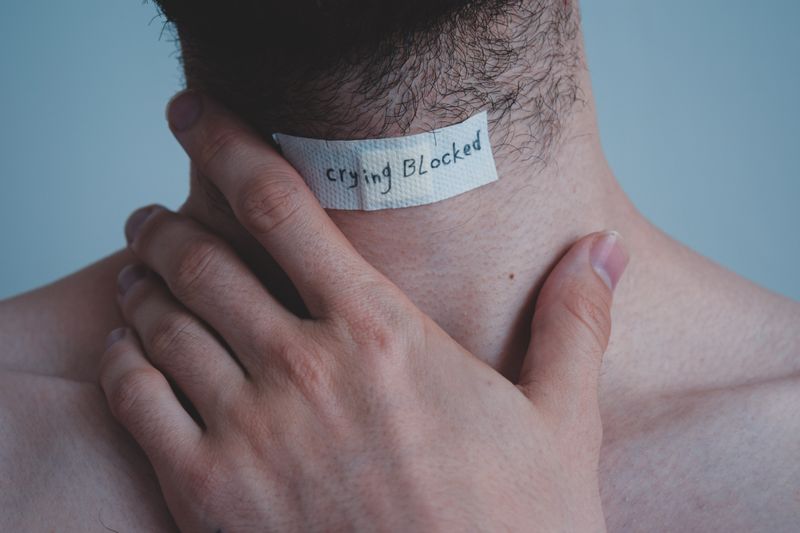
‘Be a man’, ‘only girls cry’, ‘don’t be like a girl’, ‘crying is weak’ are just some of the negative statements that are routinely inflicted on growing children, encouraging young boys to bottle up their emotions for the rest of their lives – which Simpson explains can be very damaging for their health.
“I do see this in my practice and many of these difficulties stem from childhood experiences of being shamed for expressing their emotions through crying,” says Dr Steingiesser. “This results in men who have a tendency to ‘stuff their feelings deep inside’ and withdraw emotionally from their loved ones or begin to self-medicate with drugs and alcohol.”
The suicide rates for men worldwide are more than twice as high as for women, as per the website, OurWorldInData.org sourced from the Institute for Health Metrics and Evaluation in the University of Washington, US. Dr Stiengiesser adds, “Often the loved ones of men who end their own lives are surprised and shocked as they had no idea they were suffering to this extent. One of the main reasons for this is that men do not feel safe in expressing their emotions, and may not be able to find the words to define how they feel. In addition to this, they feel shame in expressing their emotions through crying and then engage in repressive coping until they can no longer cope at all.”

Often the loved ones of men who end their own lives are surprised and shocked as they had no idea they were suffering to this extent. One of the main reasons for this is that men do not feel safe in expressing their emotions, and may not be able to find the words to define how they feel.
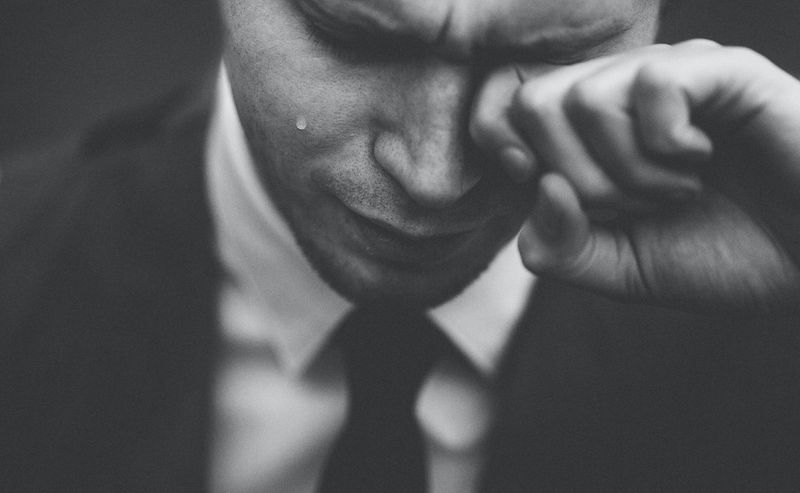
Simpson, who used to also work as a forensic psychologist treating offenders in the UK, agrees. She recounts, “I have worked with a lot of men that say they cannot cry. They don't recall crying since sort of early childhood in adulthood. And so they're often men that were brought up in invalidating environments, they've received messages from a very young age that crying is weak. And they've learned to repress any emotions that might make them feel sad. And this can definitely bring about problems in later life.”
In a 2011 study by Netherlands-based researchers published in the global Journal of Cross-Cultural Research that studied adult crying across 37 countries found that men felt more embarrassed than women to be crying.
How crying can benefit you
1. Your tears can literally take some of the stress hormones out of you
“Tears produced as a result of an emotional release, are high in stress hormones and toxins and the flush of these components out of our system is believed to potentially offer health benefits,” says Dr Steingiesser. “This in turn can help individuals to sleep better, strengthen their immune systems, and regulate weight, and the lowered stress levels may also help lower our blood pressure.”
Tears produced as a result of an emotional release, are high in stress hormones and toxins and the flush of these components out of our system is believed to potentially offer health benefits. This in turn can help individuals to sleep better, strengthen their immune systems, and regulate weight, and the lowered stress levels may also help lower our blood pressure.
However, this result of decreased stress levels may not just be because of the crying, but perhaps the expression of distress, as per a 2014 study titled ‘Is crying a self-soothing behaviour’ by Croatia-, US- and Netherlands-based researchers published in the journal Frontiers in Psychology.
2. Crying releases ‘feel-good’ hormones, including the love hormone
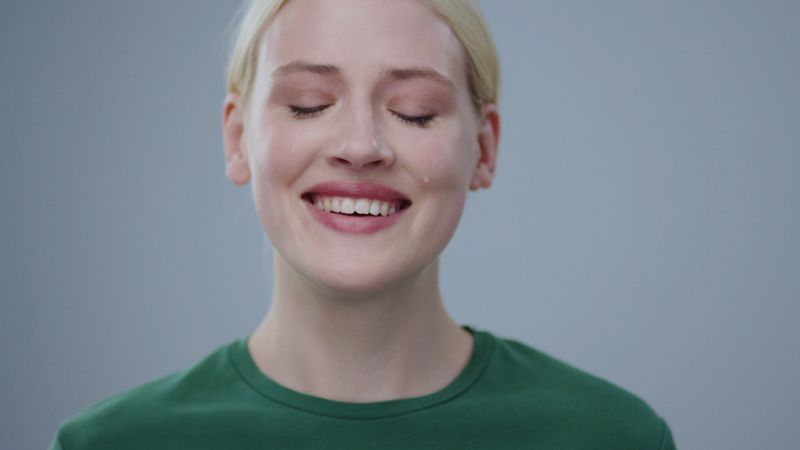
Oxytocin, the ‘love hormone’ or ‘cuddle chemical’ that plays a strong role in bonding, and other endorphins are released, giving us that spent feeling of calm and wellbeing after the storm. This happens after crying for a while, and also regulates the feelings of stress and anxiety.
“It's typically sort of linked to quite warm and fuzzy feelings, and has been shown in research to lower our sense of stress and anxiety, and has the power to regulate other chemicals such as cortisol, which is related to stress, and as such, then regulate our emotional responses to pro-social behaviours. It prepares our bodies and motivates us to be trusting of other people and to have empathy,” says Simpson.
3. Preventing the negative consequences of repressive coping
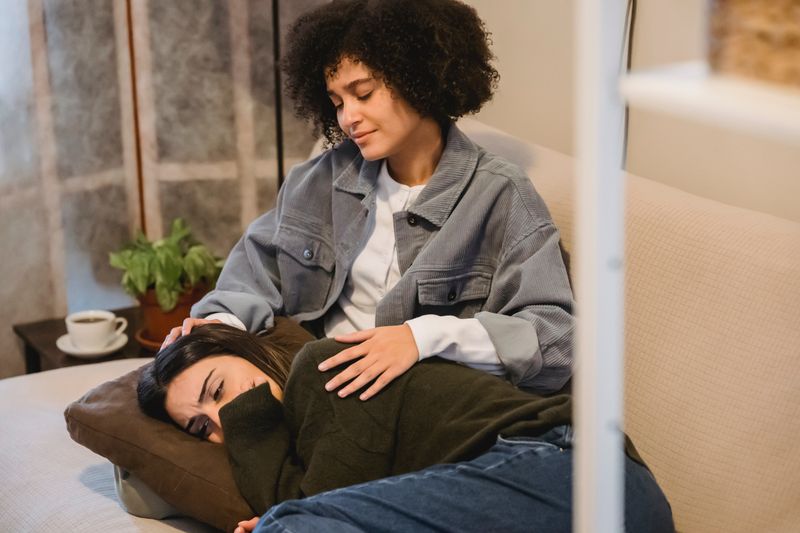
Repressive coping, is bottling up our emotions, when we don’t release tensions or negative emotional energy, explains Dr Steingiesser. This could be suppressing the urge to cry every time it appeared.
“For example, some studies have shown that repressive coping is associated with a less resilient immune system, cardiovascular disease, and hypertension, as well as with psychological and emotional challenges including stress, anxiety, and depression,” says Dr Steingiesser.
4. Encouraging support from others and increasing attachment behaviour

Crying can trigger feelings of empathy and support, revealing what may not be easily said in words to others. Simpson says, “Why do we have emotions? They motivate us and organise us to action, they communicate to us about our environments, about what we like and don’t like. They also communicate to influence other people. And so, tears are one of the most expressive ways in which we communicate our emotions.”
“Crying has also been shown to increase attachment behaviour encouraging closeness, empathy, and support from friends and family,” adds Dr Steingiesser.
5. Protecting your eyes
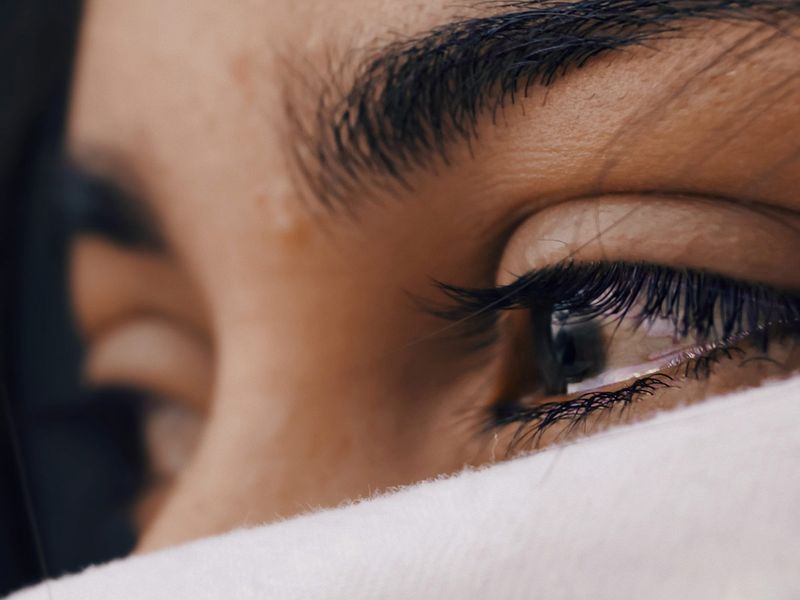
This is more to do with reflex and basal tears. “Tears are also noted to perform the important function of removing debris such as smoke and dust from our eyes and lubricating our eyes to help protect them from infection. The content of these tears are 98 per cent water,” says Dr Steingiesser.
6. Giving a voice to your emotions and self-soothing
Seeing your family after a couple of years away, and the dam breaks at the airport? The new human being you’ve been growing for nine months is finally in your arms, tiny and blinking?

Tears can be part of our happiest moments, our saddest moments and our lowest moments – exclusively gracing the extremes in our lives. “To really understand ourselves, we must understand our tears,” says Simpson. “Sometimes, we feel like we’re crying for no reason but it is really that we don’t yet understand the reason. Our tears are definitely trying to tell us something – perhaps that we’re being denied something that we care about.”
They also play an important role in helping us process deep grief. “I've also certainly seen crying be helpful in helping clients recognise and express sadness as an important part of working through stages of grief. If we refuse to cry, if we tried to block that side of it, it can really derail the process and stages of grief that we need to go through,” says Simpson.
Some open up and face these emotions at therapy, she adds, finding her office a safe space to cry. “I've had many clients say to me, ‘Oh, thank you for that, I really needed to let that out’, and I feel a bit better now. Or they might say, ‘I feel like a weight has been lifted’.”
In trauma therapy especially, this can be a crucial process. Simpson says, “Crying can really be a reaction to the acknowledgement of an emotionally painful memory, and sometimes is a really important part of the process in trauma therapy, in terms of helping to process that memory and helping the brain to heal.”
When crying is an alarm bell
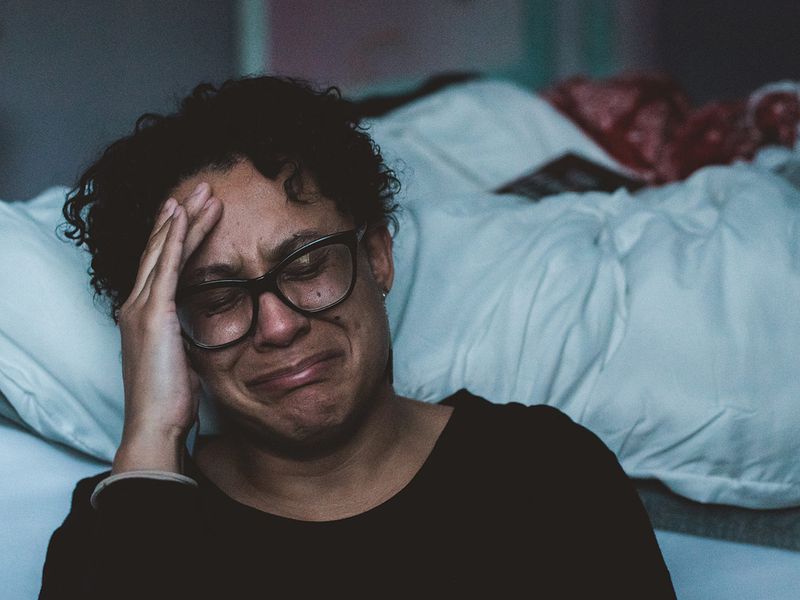
If you’re crying frequently, especially in an out-of-control way that feels without reason, it is best to consult a professional. Simpson says, “I think that can be a real indication that we might need to seek some professional help, to help us work through what might be underlying it, because it's our body trying to tell us that something is wrong.”
In a 2007 pilot investigation by Florida and Netherlands-based researchers on whether mood disorders affect crying, they found out that mood disorders may increase the frequency of negative emotional crying.
The bottom line: You can role model the ability to cry and be okay with it
When you see others cry, what is your response? Simpson says, “Some people might not feel comfortable with it, because they're not used to it, but it's still highly likely going to trigger their sense of empathy, make them want to support you in some way. That’s why it’s such a useful communication tool.
“The more we do it, the more we're going to help others. If we can bring ourselves to feel comfortable, let it out, we'll probably be quite interested to see the response from others is not what we expect. By crying ourselves, we might help somebody else to be more comfortable with it, so they might go away and think it’s okay. The more we suppress it, the more we reinforce the stigma.”





